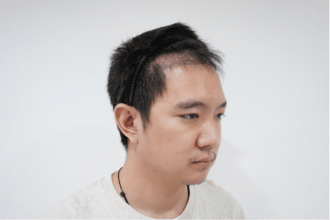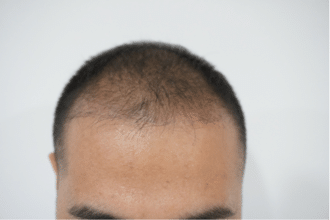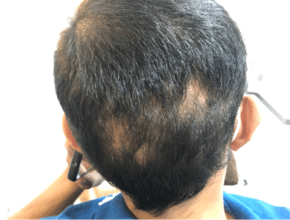Worried about shock loss after a hair transplant? Learn what causes post-transplant hair shedding, how common it is, and whether your hair will grow back.
Shock Loss in the Recipient Area (Front & Crown)
How Common Is It?
- Affects 5% of hair transplant patients.
- More likely in hairs that are already weak or in the resting phase.
Will the Hair Grow Back?
- Yes! This type of shedding is temporary.
- New hair begins growing back in 6 to 12 months.
What If All the Transplanted Hair Falls Out?
Many patients panic when all their transplanted hairs fall out, leaving a bare scalp. However, this does NOT mean the grafts have failed! The roots remain alive, and new hair will grow in time.
How to Care for the Recipient Area?
- Avoid touching, rubbing, or scratching the area.
- Sleep on a soft pillow and avoid pressure on the grafts.
- Refrain from heavy exercise for 1-2 weeks to prevent graft dislodgement.
Shock Loss in the Donor Area (Back of the Head)
Why Does It Happen?
- The FUE method removes hair follicles one by one.
- Surrounding hair may shed due to trauma from the extraction process.
How Does It Look?
- Some patients notice small bald patches in the donor area.
- The scalp may appear whiter or thinner in those spots.
Will It Grow Back?
- Yes, in most cases. Hair starts regrowing within 3-6 months.
- However, if a patient has pre-existing hair thinning, some hairs may not return.
How to Care for the Donor Area?
- Keep the area clean to prevent infection.
- Avoid scratching or rubbing the scalp.
- Use doctor-recommended shampoos to maintain scalp health.

Can Shock Loss Be Permanent?
When Does Shock Loss Become Permanent?
If hair follicles were already weak due to DHT (dihydrotestosterone), they may not grow back after shedding. This is rare but can happen in areas affected by male pattern baldness.
How to Prevent Permanent Loss?
- Early hair restoration treatments (like Finasteride) can protect existing hair.
- Minoxidil may stimulate faster regrowth.
Can You Prevent Shock Loss?
While shock loss cannot be completely avoided, you can take steps to minimize its effects:
- Use Minoxidil – Can help speed up hair regrowth after transplant.
- Take Finasteride – Helps protect existing hair from DHT-related loss.
- Follow post-op care instructions – Proper scalp care promotes recovery.
- Be patient – Hair growth takes time, but results will come!

Final Thoughts – Shock Loss Is Temporary!
If you’re experiencing shock loss, remember that it is a natural part of the hair transplant recovery process. While seeing hair shed after surgery can be unsettling, new hair will grow back within 6-12 months.
At Cosmo Hair Clinic, our experienced surgeons ensure that your grafts are placed securely to minimize shock loss and promote healthy hair regrowth.




